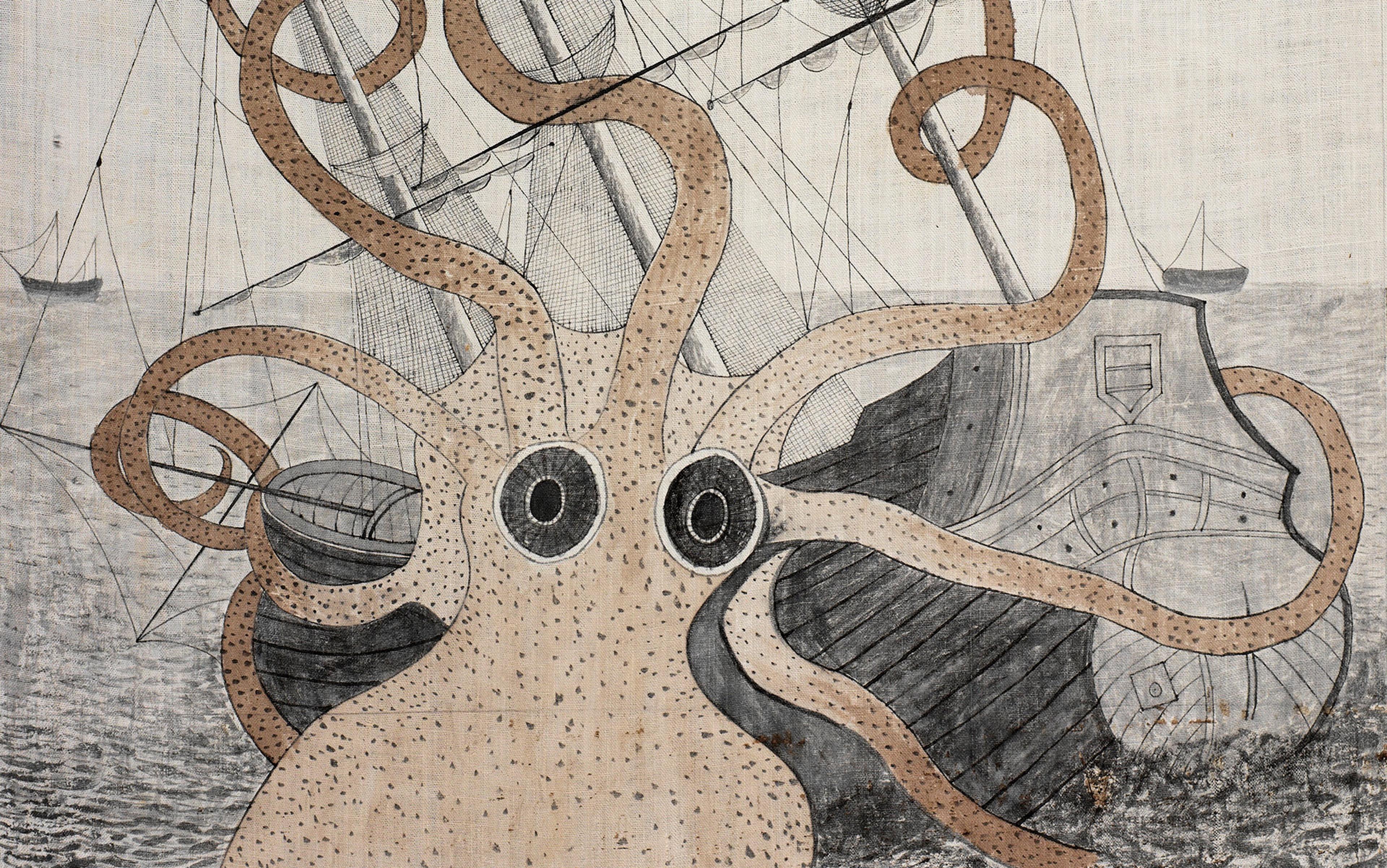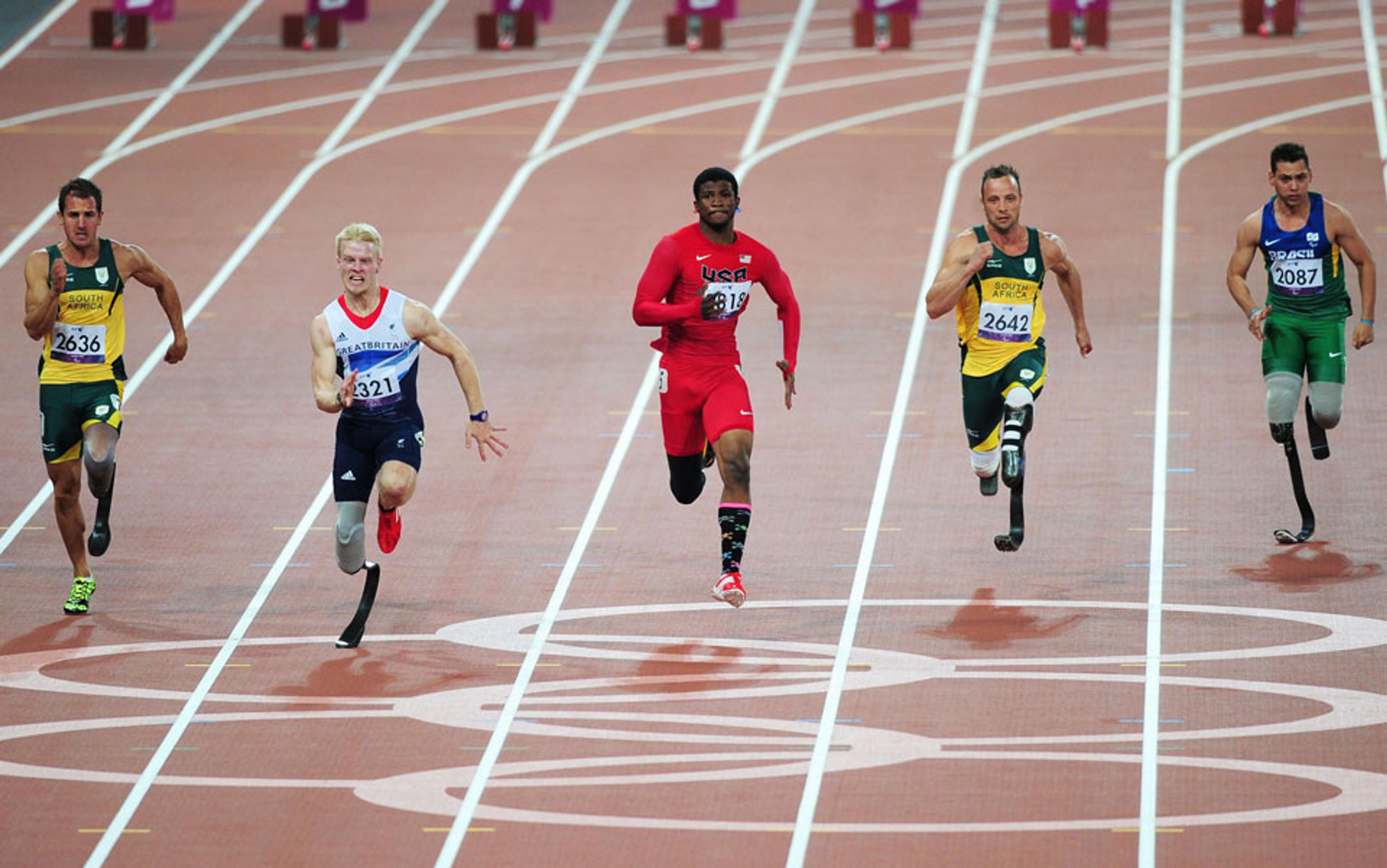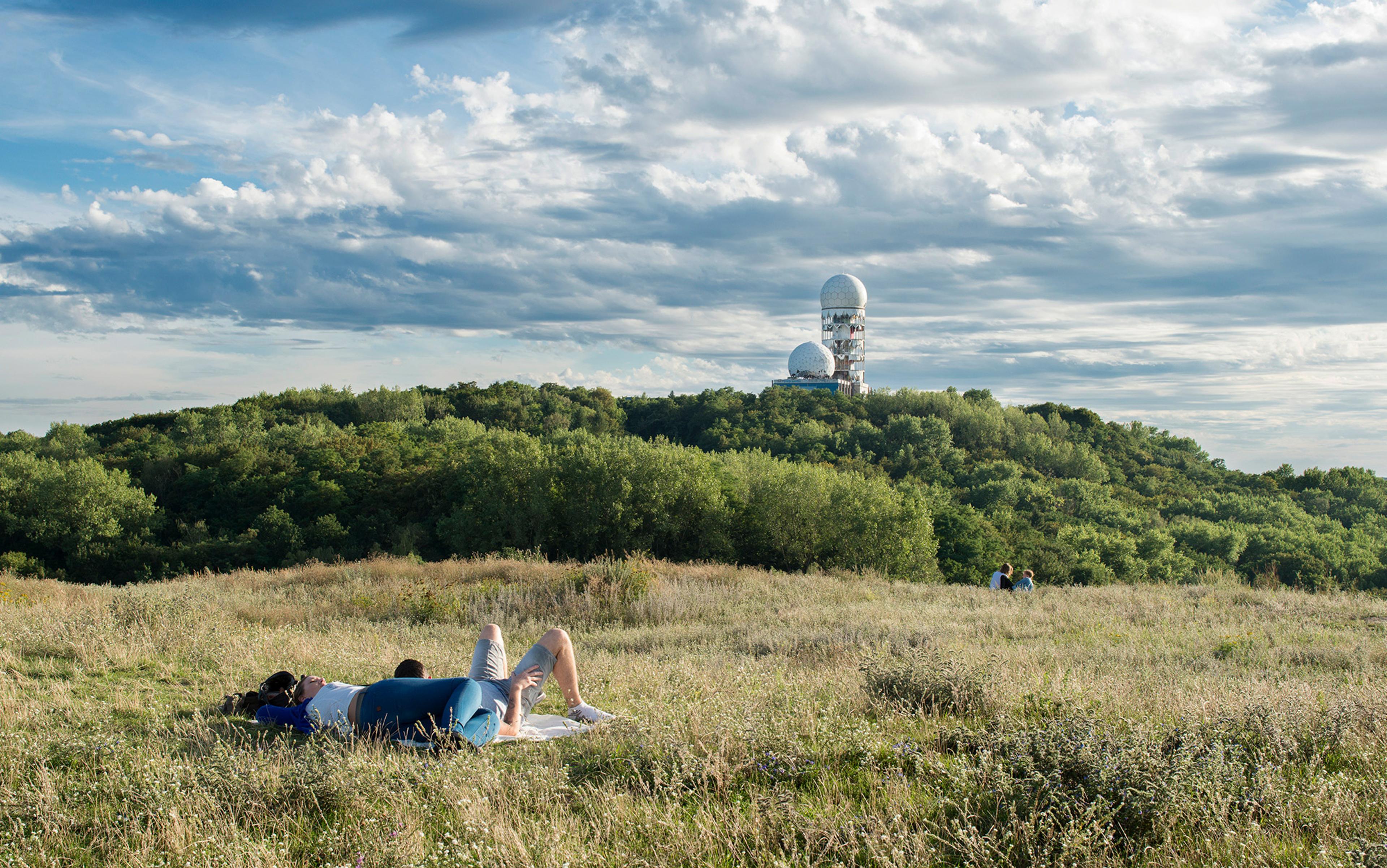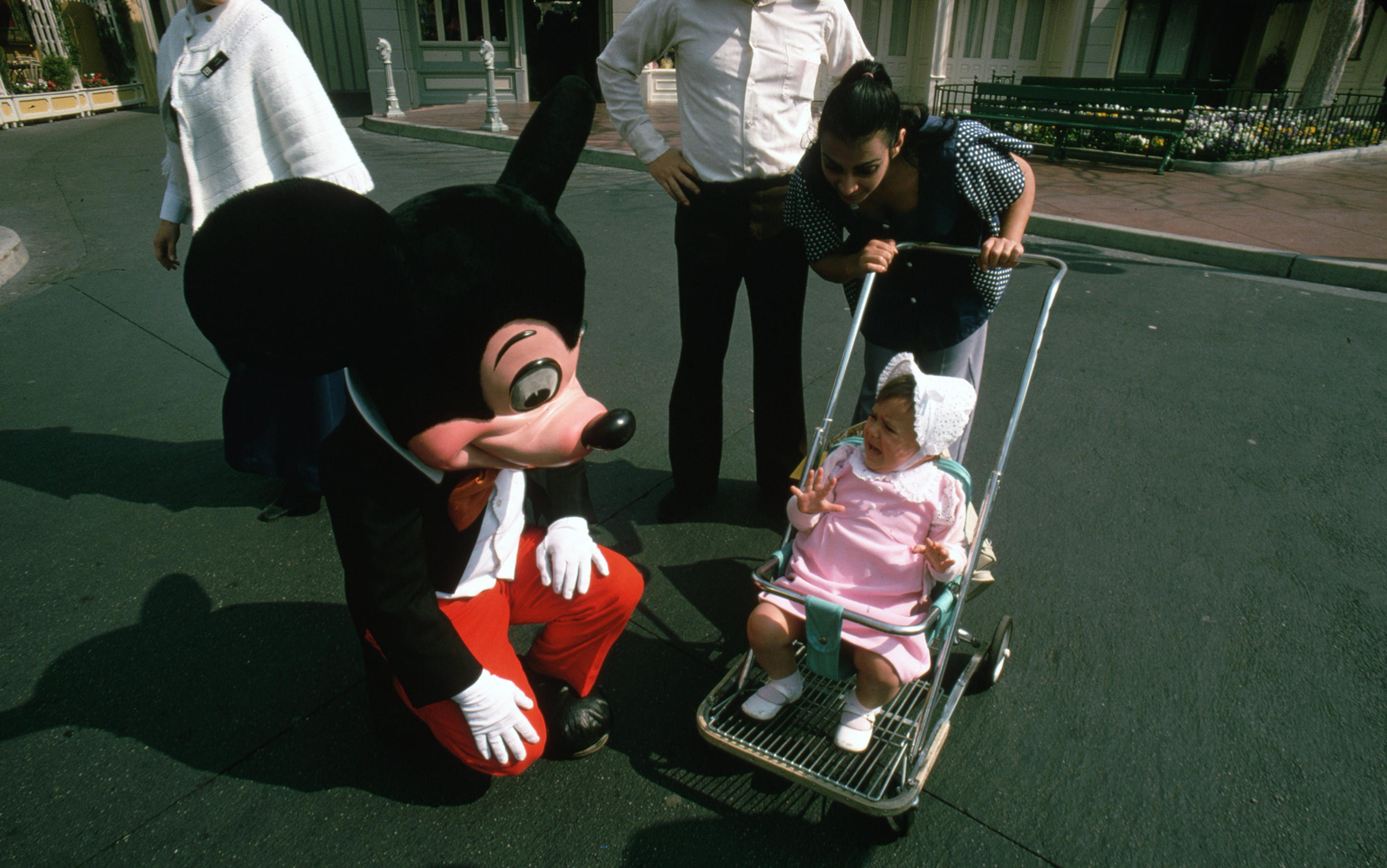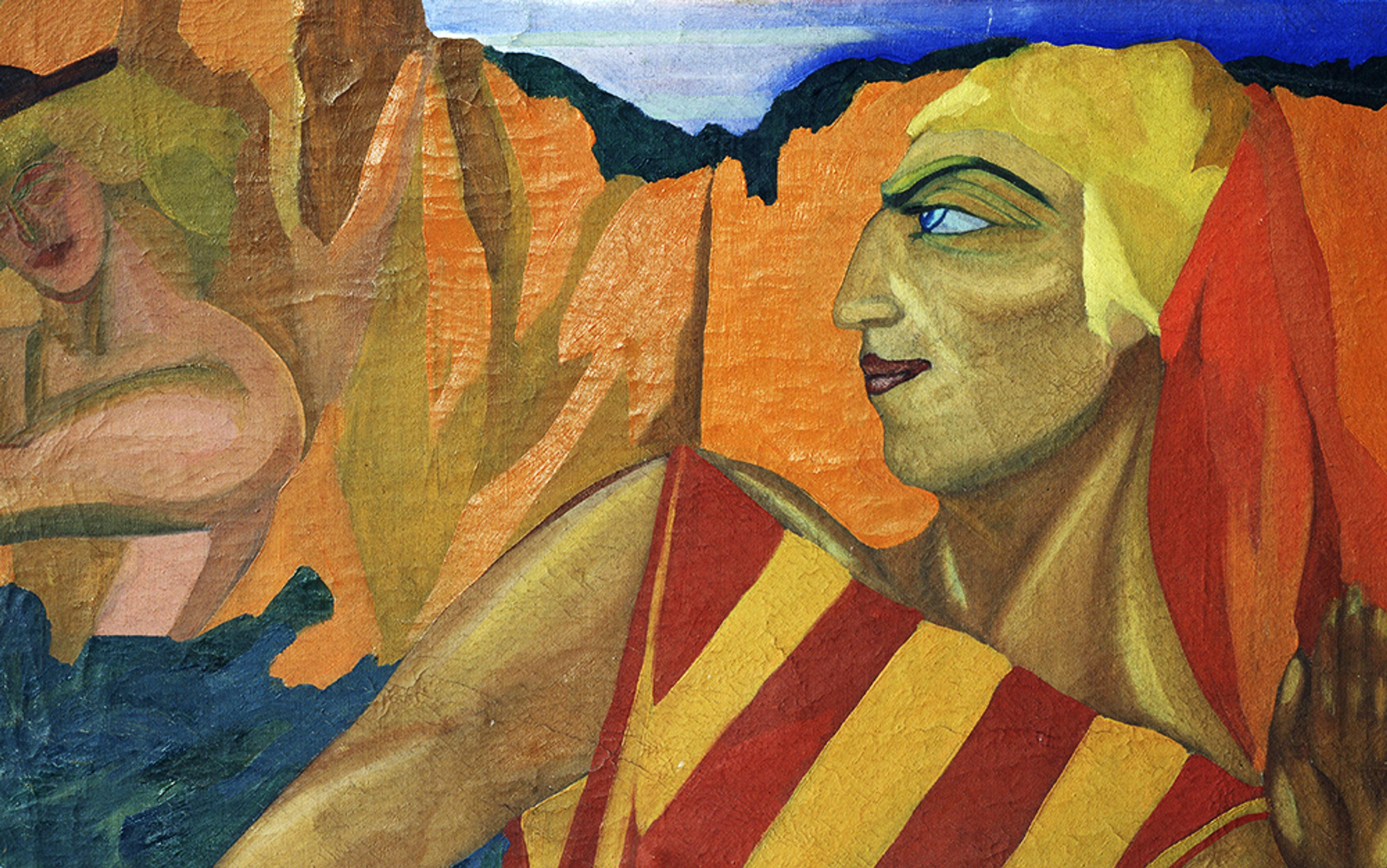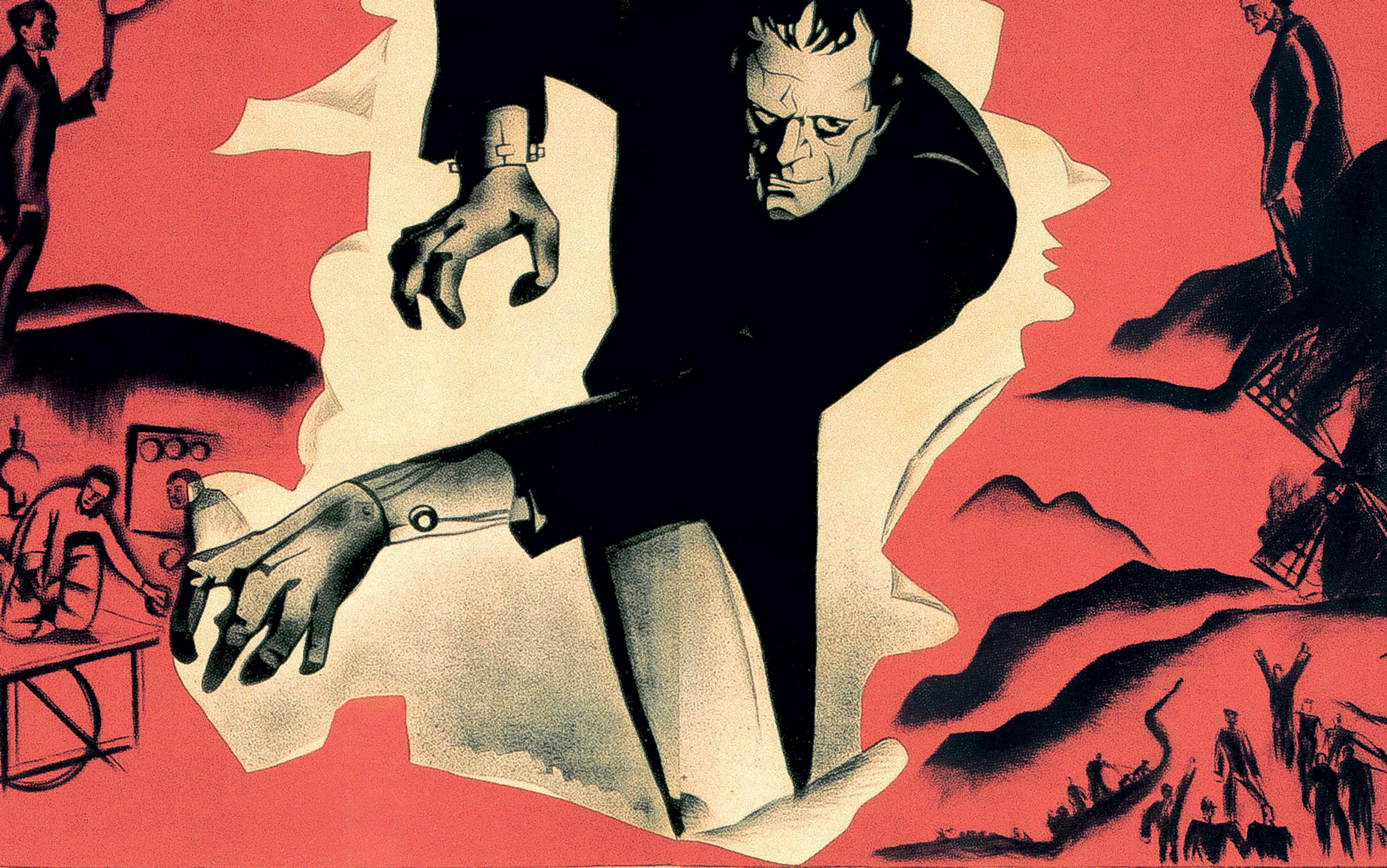At the edge of the town of Innsbruck in Austria perches Schloss Ambras, a Renaissance palace with a medieval core. Now a museum complex with gardens patrolled by peacocks, it contains a large room stuffed with what 16th-century visitors called wonders and curiosities.
On the wall, a row of portraits depicts various people: a giant; two dwarves; a person with congenital joint problems; a man gored through the eye with a lance; Vlad III, known as Țepeș or the Impaler (the 15th-century ruler of Wallachia, in present-day Romania, who inspired Bram Stoker’s 1897 novel Dracula); and four members of the Gonsalvus family, whose father Petrus and multiple children were so hairy that some were given as gifts from one aristocratic household to the next and pawed over by physicians for ‘science’.

The Giant Anton Frank (Franck) with the Dwarf Thomele (after 1583), attributed to an anonymous German artist. Courtesy Schloss Ambras

Gregor Baci (16th century), attributed to an anonymous German artist. Courtesy Schloss Ambras

Vlad III (16th century), attributed to an anonymous German artist. Courtesy Schloss Ambras

Portrait of a Disabled Man (16th century), attributed to an anonymous German artist. Courtesy Schloss Ambras
For 16th-century artists, physicians, naturalists and collectors, these atypically embodied individuals represented people beyond the edge of ‘normal’. Individuals with unusual physiques or lifestyles were routinely featured in collections, artworks and manuscripts devoted to what were then known as monsters. Libraries in the 16th and 17th century contained books like Ambroise Paré’s Des monstres et prodiges (1573) and Ulisse Aldrovandi’s Monstrorum historia (1642), in which numerous human beings appear.

Petrus Gonsalvus, born 1556 (1580), attributed to an anonymous German artist. Courtesy Schloss Ambras

Madeleine Gonsalvus, daughter of Petrus Gonsalvus, born 1574 (c1580), attributed to an anonymous German artist. Courtesy Schloss Ambras

Enrico Gonsalvus, son of Petrus Gonsalvus, born 1576 (c1580), attributed to an anonymous German artist. Courtesy Schloss Ambras
There’s a long Western tradition of identifying beings as monsters. In many cases, it’s clear why: basilisks or dragons are monstrous, as are more humanoid forms like zombies, vampires and werewolves. Monsters are categorically different from garden-variety creatures and typically, but not necessarily, fictional and alarming. But telling stories about monsters isn’t simply a way of describing beings that are nothing like humans. It’s also how societies define and police who they think counts as fully human, through acts of what I call monster-making or monstrification.
Monster-making doesn’t always require the label ‘monster’, nor does it require defining a person as part-animal or supernatural. I see monstrification as any attempt to convey that an individual or group has broken the category of a ‘normal’ human being, via their bodies, minds or culture.
History shows that there has long been a blurry, moving line between the categories of human being and monster. This line threads its way through the people whose portraits appear in an uncanny corner of the Schloss Ambras curiosity cabinet, and continues into the present day, often justifying discrimination and other harms against individuals and groups who differ from a majority. It is also an ever-changing boundary, as social, political and technological developments alter its shape and position, and open up new forms of monstrification. Some of the most heated debates of our age – from trans rights to immigration reform to the ethics of AI – are underpinned by ancient fears of monstrosity, and cynical attempts to exploit them. And, in turn, today’s monster-making will shape the future, by redrawing the experience (or absence) of human rights, the horizons of possibility to live freely in safety and dignity, and the laws and systems under which people live. So, where does the human end and the monster begin? The boundaries are more porous than we might like to think.
Ancient Greek and Roman thinkers interpreted atypical births as messages or punishments from the gods, or as accidents or jokes of nature. An infant with an unusual number of limbs would be, in ancient terms, both human and a monster. The ancients also defined another sort of monstrosity: that of entire nations believed to share an unusual, usually physical, trait. The Roman naturalist Pliny the Elder, writing in his Naturalis historia (c77-79 CE), placed a wide variety of monstrous peoples beyond the Alps and in Africa and Asia on the authority of earlier geographers.

Manuscript page from De Natura Avium (Bestiary) by an unknown illuminator (1277 or after). Courtesy Getty
But the ‘normal’ humans of the Mediterranean weren’t hermetically sealed away from monstrous peoples. Ancient thinkers hypothesised that external conditions like climate, the seasons, foodstuffs and exercise affected the balance of the four humours, or essential substances, in their bodies: blood, phlegm, black bile and yellow bile. If bodies were malleable, there was in theory a slippery slope from the self to the monster and even to the animal.
For medieval theologians and naturalists, thinking through the inheritances of classical traditions and Christianity, humanity was unique since only humans were capable of salvation. Yet medieval thinkers also understood life to exist on a continuum of overlapping categories called the Great Chain of Being. The ‘worst’ of a particular kind overlapped with the ‘best’ of the kind below. Thus, the worst humans were on a par with apes, which in turn overlapped with other animals. (Supernatural monsters, presumably, lurked somewhere within the animalistic realm. Since so much about nature was unknown, there was no reason for people to doubt stories about monstrous beings living beyond their own communities.) This blurring of the human and animalistic worlds made it easier to rationalise the monstrification of ethnic others with different customs. An individual’s humanity was conditional, shaped by the choices they made in life.

Drawing of The Great Chain of Being from the book Rhetorica Christiana (1579) by Diego Valadés. Courtesy Wikipedia
Medieval Britain was a space of migration, cultural intermingling and stories devised to monstrify ethnic groups. For the chronicler Gerald of Wales (c1146-1223), descended from Welsh nobility and Norman conquerors, the English were, as he put it in his Invectiones, ‘the most worthless of all peoples under heaven’. In his Topography of Ireland (c1188), he observed that Ireland was inhabited by barbarous, even bestial people and the occasional human-animal hybrid like an ox-man and a pair of werewolves (although in later versions of his chronicle he suggested that they were, nonetheless, redeemable).
This kind of argument would provide a biblical justification for the enslavement of black Africans
Medieval England was also the site of antisemitism. In 1290, King Edward I issued an Edict of Expulsion declaring that all Jews should leave England. This was the culmination of decades of juridical monster-making: laws that restricted where Jews could live, and mandating that they wear badges on their clothing, both strategies to make them hypervisible and thus easier to mistreat. Christians attempted to frame Jewishness as observable and monstrous in images, maps and geographical writings. In the 12th-century Winchester Psalter, a page showing Passion scenes from Christ’s life depicts Jews with hooked noses, fang-like teeth and grimacing faces, wielding giant bones.

Page from the Winchester Psalter (12th century). Courtesy British Library
In Chronicon de rebus gestis Ricardi Primi (1192), about the deeds of King Richard I of England, the monk and chronicler Richard of Devizes wrote that Jews were ‘bloodsuckers’ (sanguisugas) and that the Devil was their father. And in his Chronica maiora (1259), the English monk, chronicler and geographer Matthew Paris conflated Jews with the monstrous tribes of Gog and Magog, recounting how God had imprisoned them behind mountains but noting that they would come forth on the Day of Judgement and bring great destruction. Paris implied that Jews were physically distinguishable and poorly formed: in his description of the messenger Robert of London, he observed that he ‘was small and dark, having one arm longer than the other and misshaped fingers, that is, two of them being joined together and with the face of a Jew.’
The Book of Genesis offered another explanation for monsters. It recounts how Noah divided the world among the descendants of his three sons (Ham, Shem and Japheth). Seeing his father Noah drunk and naked, Ham called his brothers to come and see it for themselves, and for this Noah cursed Ham’s son Canaan to serve Shem and Japheth’s kin. Medieval authors framed this ancestral sin as creating a fissure in the family of humanity: an ontological break and categorical distinction between the descendants of Shem and Japheth and those of Ham. In the 5th century, the church father Jerome associated Ham with heat (calidus in Latin); in the 9th century, the monk Angelomus of Luxeuil wrote that Africa had been assigned to Ham and his descendants on the basis of the region’s heat. Many later authors followed suit. As the historian John Block Friedman observed in The Monstrous Races in Medieval Art and Thought (2000), by at least the 11th century, some versions of the story assert that these descendants had deformed bodies, lived like animals, or were cursed with black skin as a mark of shame. A manuscript of the 14th-century bestseller The Book of John Mandeville at the Fitzwilliam Museum in Cambridge, UK, goes so far as to note that ‘enemies’ often slept with Ham’s descendants (to whom the scribe, unusually, assigned Asia) ‘and engendered divers[e] and very disfigured peoples, some horse-footed giants, some with great ears, some with one eye and some with other disfigured members’.
Ham’s lineage was thus tied to visible signs of the curse, signs that were also attached to racial stereotypes associated with monsters. Later, this kind of argument would provide a biblical justification for framing the enslavement of black Africans as morally justifiable.
European exploration and Atlantic slavery created the commercial impetus for Europeans to monstrify people across vast swathes of the world. In 1503, Queen Isabella of Castile and León issued a decree concerning the circum-Caribbean regions of early Spanish settlement declaring that cannibals could be legally enslaved, for the sake of protecting their future victims. And in his travel compendium Hakluytus Posthumus (1625), the English Puritan editor Samuel Purchas declared that the Algonquians of eastern North America had ‘little of humanitie but shape … more brutish then [sic] the beasts they hunt.’
In the 17th century, Caribbean colonies passed laws defining the enslaved black African and the white indentured Christian servant as distinct legal categories. Lawmakers even disappeared the mixed-race children of enslaved women and white men (often enslavers) by ruling that a child took the legal status of their mother. That act of erasure framed mixed-heritage people as monstrous in the sense of transgressing categories that were supposedly separate while simultaneously claiming that, in legal terms, they did not exist.
From the 18th century onwards, science offered other routes to monster-making. In 1735, the Swedish botanist Carl Linnaeus published The System of Nature, a treatise for identifying and naming species, which detailed a hierarchy of nature from the highest to the lowest orders. In the 10th of 12 editions that appeared in Linnaeus’s lifetime, humans appeared at the top and were subdivided into African, American, Asian, and European. Linnaeus distinguished between these groups by creating stereotypes of physical features, behaviour, temperament and social organisation. He tied these invented clusters of characteristics to the humours by assigning to each continent’s people one of the four temperaments of ancient medicine: phlegmatic (Africans), choleric (Americans), melancholic (Asians), and sanguine (Europeans).
In addition, each continent had a distinct people, defined by local climate and activities, whom Linnaeus called Homo monstrosus: the Hottentot (‘less fertile’), the Chinese (‘head conic’), the Patagonian (‘large, indolent’), the Canadian (‘head flattened’), and the Mountaineer (‘small, active’). Left unanswered was the question of how distinct each of these peoples were from those around them. Yet in a book about the taxonomy of nature, in which humans and animals were arranged in tables, the visual rhetoric was one of distinct, unequal beings.

From A General System of Nature by Carl Linnaeus, translated by William Turton (1802), via Biodiversity Heritage Library, NCSU Libraries
Later, in On the Origin of Species (1859), Charles Darwin used the term ‘monster’ for some extinct species, and for anomalous individuals brought about by mutation. In the 1869 edition, he added: ‘At long intervals of time, out of millions of individuals … deviations of structure so strongly pronounced as to deserve to be called monstrosities arise.’ He also referred to mutated members of a species as ‘sports’ – another term for nature’s jokes that had been, since antiquity, one of the causes given for notably, unpredictably different offspring.
Nazi propaganda framed Roma, Sinti, neurodiverse, disabled, LGBTQ+, and Jewish people as not quite human
Monster-making in 19th-century shows and fairs used Darwinian ideas to justify a dark form of entertainment. Audiences in Paris, London and New York flocked to see kidnapped Indigenous people from Asia, Africa and the Americas in human zoos or ‘freak shows’ where unusually embodied or disabled people were treated as spectacles. In some cases, exhibited individuals were called the ‘missing link’ between humans and apes or, as one pamphlet put it, ‘a living proof of Darwin’s Theory of the Descent of Man’.

Poster for Mr Smith’s Exhibition (1849). Courtesy the Wellcome Collection

Notice for special lecture on Krao: the ‘Missing Link’ (1887). Courtesy the Wellcome Collection
In the 20th century, science continued to offer narratives to those who wished to monstrify others. The Nazis constructed propaganda in books, pamphlets, posters and legal regulations that framed Roma, Sinti, neurodiverse, disabled, LGBTQ+ and Jewish people as not quite human. The pamphlet Der Untermensch (1942), or The Subhuman, described Jews as having ‘features similar to a human … lower on the spiritual and psychological scale than any human … Not all of those who appear human are in fact so.’
Far from being a habit confined to history, monstrification endures today. Monster-making in the 21st century may not always include the word ‘monster’, but that just makes the practice more insidious.
Many societies participate in contracting the category of who gets to count as human. One tactic is to exaggerate what harms a social group can do, and thus the size of the threat they allegedly pose. Bad actors monstrify these groups by exploiting age-old fears: as a threat to safety, to purity, or a way of life. It makes it easier to justify prejudice or violence. Monstrification is the telling of stories about an extraordinary existential danger supposedly posed by an entire class – and you don’t have to look far to see it applied to minority groups in contemporary politics: Black, immigrant or trans, to name a few.
Monstrification is the tool of choice of authoritarianism, the meta-narrative with which they tell stories about how individuals and groups with less power and privilege, or who have been the historic targets of monstrification, supposedly threaten a society. Authoritarians take a legitimate fear (like economic hardship) and claim that the cause is a monstrified group. By implying a zero-sum game in the recognition of humanity, they attempt to persuade people that the only way they can guarantee that their own humanity will be recognised is if they fail to recognise the humanity of some other group.
Today, monstrification happens in other ways too. In contemporary media, mass shooters, serial killers and leaders who order mass murders are sometimes called monsters for profoundly breaking the social contract. While their actions are reprehensible, implying that such individuals are not human suggests the rest of society is off the hook. The label obscures how communities and their values create permission structures that enable, even encourage, a few individuals to commit heinous crimes.
Beings like the Minotaur both exist in nature and can be engineered in the lab
Meanwhile, other boundaries between humans and monsters are emerging through advances in biotechnology and engineering. Centuries ago, the human-monster boundaries that were most apparent were those that protected or separated humans from the living world around them. These boundaries were understood in the West as natural or divinely ordained. In the contemporary world, two additional boundaries have emerged: between human and genetically modified human, and between human and machine.
For example, people can now even receive organ transplants from animals. The chimeras of classical mythology – beings that are simultaneously two or more types of animal, like the Minotaur – both exist in nature and can be engineered in the lab. In the future, genetic technology also promises to create categories beyond the human: people who, for better or worse, have been modified.
Advances in technology have also dissolved the physical boundary between human and machine. Devices like prosthetics, pacemakers and hearing aids extend possibilities for individuals whose health or embodiment fall beyond what society defines as typical.
In 1960, the scientists Manfred E Clynes and Nathan S Kline published a paper in the journal Astronautics that proposed dissolving this boundary entirely in order to solve some of the challenges of human space flight. They suggested devising superhuman, cybernetic organisms – for whom they coined the term cyborgs – whose physiologies were regulated by drugs and mechanical implants that enabled them to survive in environments different from that of Earth. Such an astronaut might, for example, have an artificial lung that removed the need to breathe, or be injected with drugs to place them in hibernation.
Cyborg astronauts remain theoretical, but they have inspired fictional scenarios that invite us to wonder whether the boundary between human and machine is indeed monstrous. Star Trek’s Borg Collective, a species that first appeared in The Next Generation franchise in 1989, emblematises the no-longer-natural-and-therefore-deeply-creepy. The Borg comprise a civilisation of cyborgs fashioned out of humanoid species that the collective had assimilated by force. They have a collective consciousness: the Borg are able to hear, in their minds, the thoughts of other Borg. From their bone-chilling mantra ‘Resistance is futile’ to the fascinating horror of their in-your-face hybridity – prosthetic arms, ocular implants and nanobots in their blood – the Borg encapsulate fears we didn’t know we had of machine takeovers.

Borg Collective. Courtesy Paramount Pictures
In the 21st century, controversies around the human-machine boundary have gone digital. The aversion to the use of generative AI (genAI) to generate art, music, words and video simulations is, I would argue, often underpinned by fears of soulless machines encroaching on humanity’s essence. If we outsource quintessential parts of being human, will we monstrify a part of ourselves? Far from being a virtual tool that extends and enhances human capabilities, some fear that in a worst-case scenario genAI may turn a person into something akin to a zombie: mindless, limited by datasets whose origins they cannot access, and controlled by the choices, biases and assumptions of programmers of genAI.
It remains to be seen how societies will respond as the lines between human and machine become ever more blurred. In a world of AI controlled by the interests of Big Tech, seeking to preserve what it means to be human may well be justified. However, we might also be cautious before monstrifying those people who choose willingly to blend their minds or bodies with machines in the future.
Resisting the rhetoric of monstrification involves being mindful of three things. First, recognising monstrification for what it is: a process that constrains, even endangers, people’s lives for no other reason than that they give the lie to myths about tidy, unchanging social categories. Second, it involves understanding that there are hidden agendas when people spin stories to declare that some don’t deserve human rights or due process. Anyone pushing a monstrifying agenda is using historical patterns of fear and prejudice to activate the worst version of society for personal gain. Finally, almost no one is safe in a culture of monstrification. Since no social category is hermetically sealed from any other, the risk of being the object of monstrification is contagious, its proponents continually seeking new targets. Either everyone’s rights are protected, or no one can be sure their own rights will be upheld.
So how should we think with and about monsters? What might a better future be like? In ‘A Manifesto for Cyborgs’ (1985), her essay on the blurry boundary between humans and technology, the biologist and historian of science Donna Haraway made ‘an argument for pleasure in the confusion of boundaries and for responsibility in their construction.’ This argument is worth extending beyond the human-machine boundary to all boundaries at the edge of the human and between social categories.
Rather than fearing squishy, blurry, moving boundaries between ourselves (however defined) and others, we could celebrate the wonder of possibility, a mode of thinking I call monstrofuturism. Inspired by the imaginative, empowering fiction of Afrofuturism, which transcends the legacies of slavery, the notion of monstrofuturism proposes a monster-centred ethics: one that accepts, welcomes and celebrates human variety, instead of insisting that we live in fixed, discrete boxes.
Human difference doesn’t have to be mapped onto a hierarchy that recognises some people as more people than others. A better future would be one in which people’s sense of self wasn’t pinned to fixed ideas about what they or their people were, in which difference and change expanded our collective choices and possibilities. In this world, we would all be wondrous monsters, but not monstrous.

